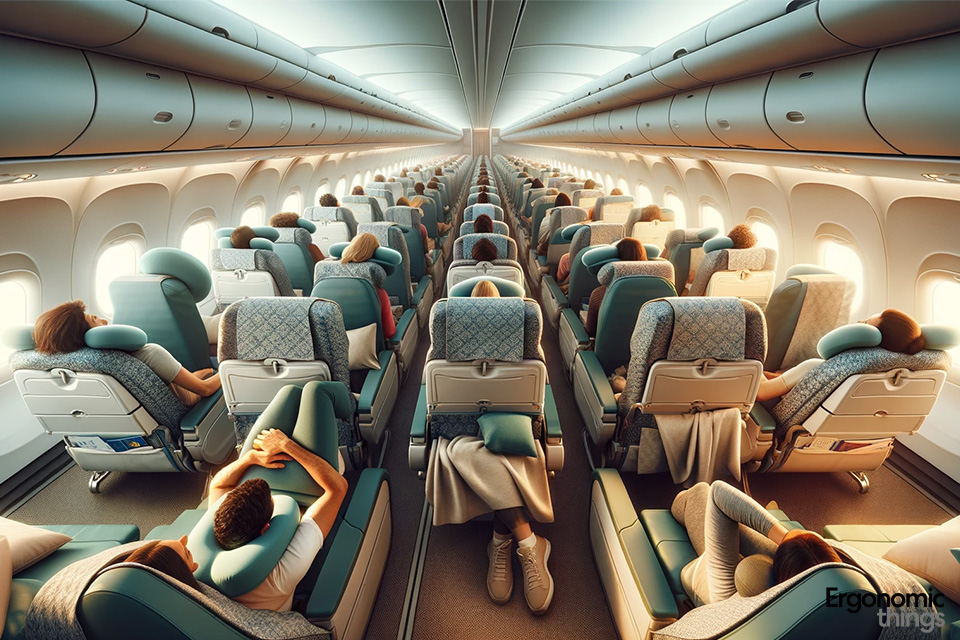Ever felt like a sardine, squished and cramped, during a flight? You’re not alone. Flying, especially on long-haul flights, can take a toll on your body and mood. But what if I told you that a few simple ergonomic adjustments could transform your flying experience from bearable to enjoyable? That’s right, with just a few tweaks, you can fly comfortably and arrive feeling fresh. Let’s dive into the top 5 ergonomic adjustments for a more comfortable flight experience.
Choosing the Right Seat
Why It Matters: Your seat on the plane can make or break your flight experience. Think of it as your little nest for the next few hours or even half a day.
- Aisle vs. Window: Aisle seats offer easier access to move around, while window seats provide a place to lean and more control over the light.
- Legroom: Exit rows and bulkhead seats offer more legroom, but sometimes less recline. It’s a trade-off worth considering.
Adjusting Your Seat for Optimal Posture
Finding the Sweet Spot: Just like adjusting your chair at the office, finding the right seat position on a plane can significantly impact your comfort.
- Seat Back: Slight recline can reduce the strain on your lower back. Avoid full recline to maintain good blood circulation.
- Foot Position: Keep your feet flat on the ground or on a footrest to avoid pressure under your thighs.
Strategic Use of Pillows and Blankets
Custom Support: Airline pillows and blankets aren’t just for warmth and comfort; they can be strategically used to support your body.
- Lumbar Support: Roll a blanket or use a pillow behind your lower back for added support.
- Neck Pillow: An obvious choice, but crucial for preventing neck strain during naps.
Staying Mobile During the Flight
Combatting Stiffness: Staying seated for too long can lead to discomfort and even health risks. Movement is key.
- Stretching: Simple stretches can be done in your seat to keep the blood flowing.
- Walking: Take regular walks down the aisle to stretch your legs and improve circulation.
Personal Item Packing for Ergonomic Access
Accessible Essentials: Packing your carry-on with accessibility in mind can save you from awkward stretches and strains during the flight.
- Under the Seat: Keep items you’ll use frequently under the seat in front of you for easy access.
- Organized Packing: Use pouches or compartments to avoid rummaging through your bag mid-flight.
Ergonomics isn’t just for the workplace; it’s crucial for any situation where you’re stationary for long periods, including flying. By choosing the right seat, adjusting for optimal posture, using pillows and blankets strategically, staying mobile, and packing smart, you can dramatically improve your flight experience. Next time you fly, remember these tips and transform your journey from enduring to enjoying.
FAQs
1. How can I choose the best seat for comfort on a flight?
Look for seats with extra legroom, consider the pros and cons of aisle vs. window seats, and check seat maps for your specific aircraft.
2. What are some effective stretches I can do in my seat?
Shoulder rolls, neck tilts, ankle circles, and knee lifts are great ways to keep your blood circulating.
3. How often should I get up and walk during a flight?
Aim for every 1-2 hours to keep your muscles loose and blood flowing properly.
4. Can bringing my own pillow make a difference?
Absolutely. A good neck pillow can provide the necessary support for your neck and help you avoid stiffness.
5. How does packing my carry-on ergonomically help?
Packing with accessibility in mind means you can reach your essentials without unnecessary stretching or straining, keeping you comfortable throughout the flight.












